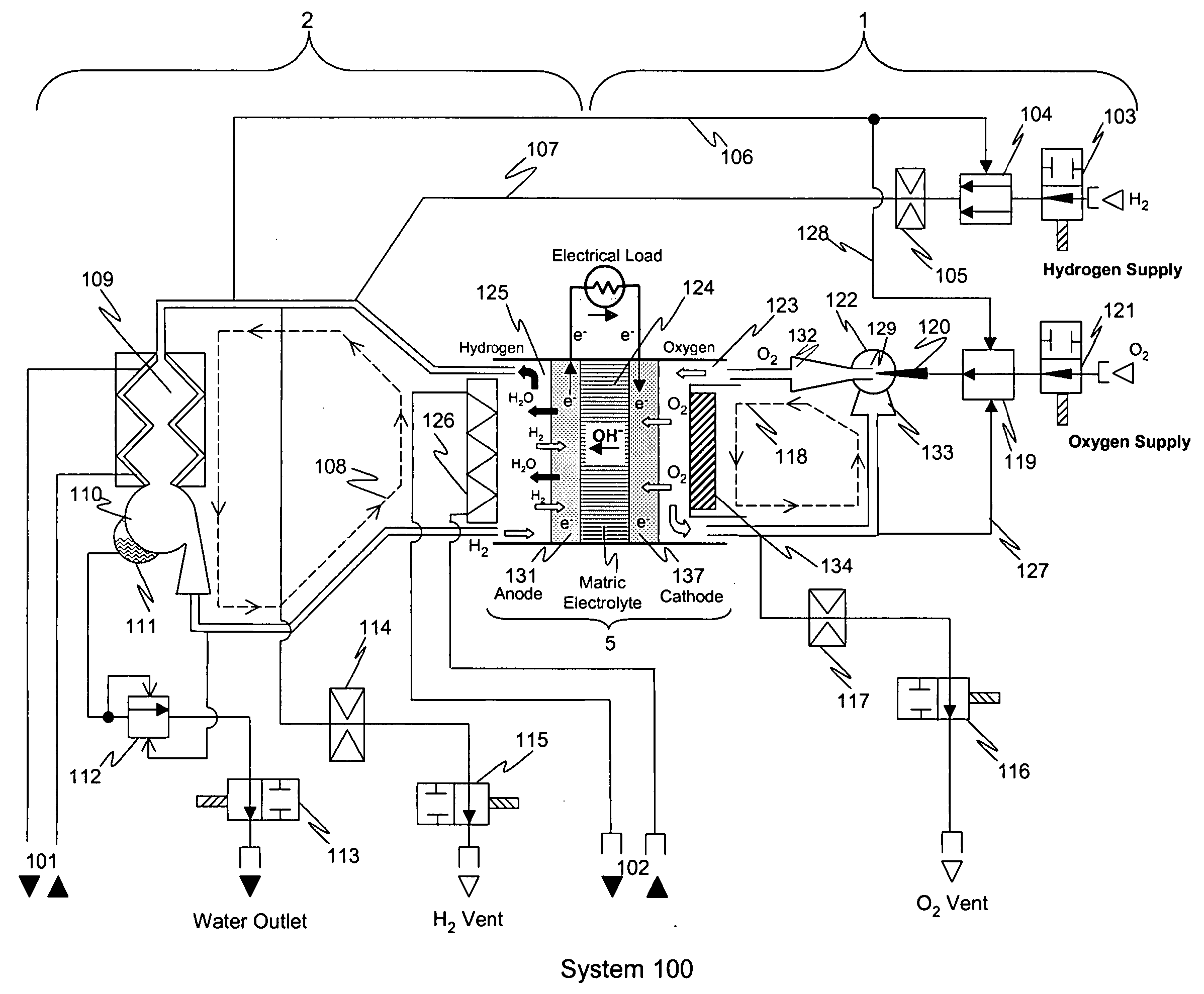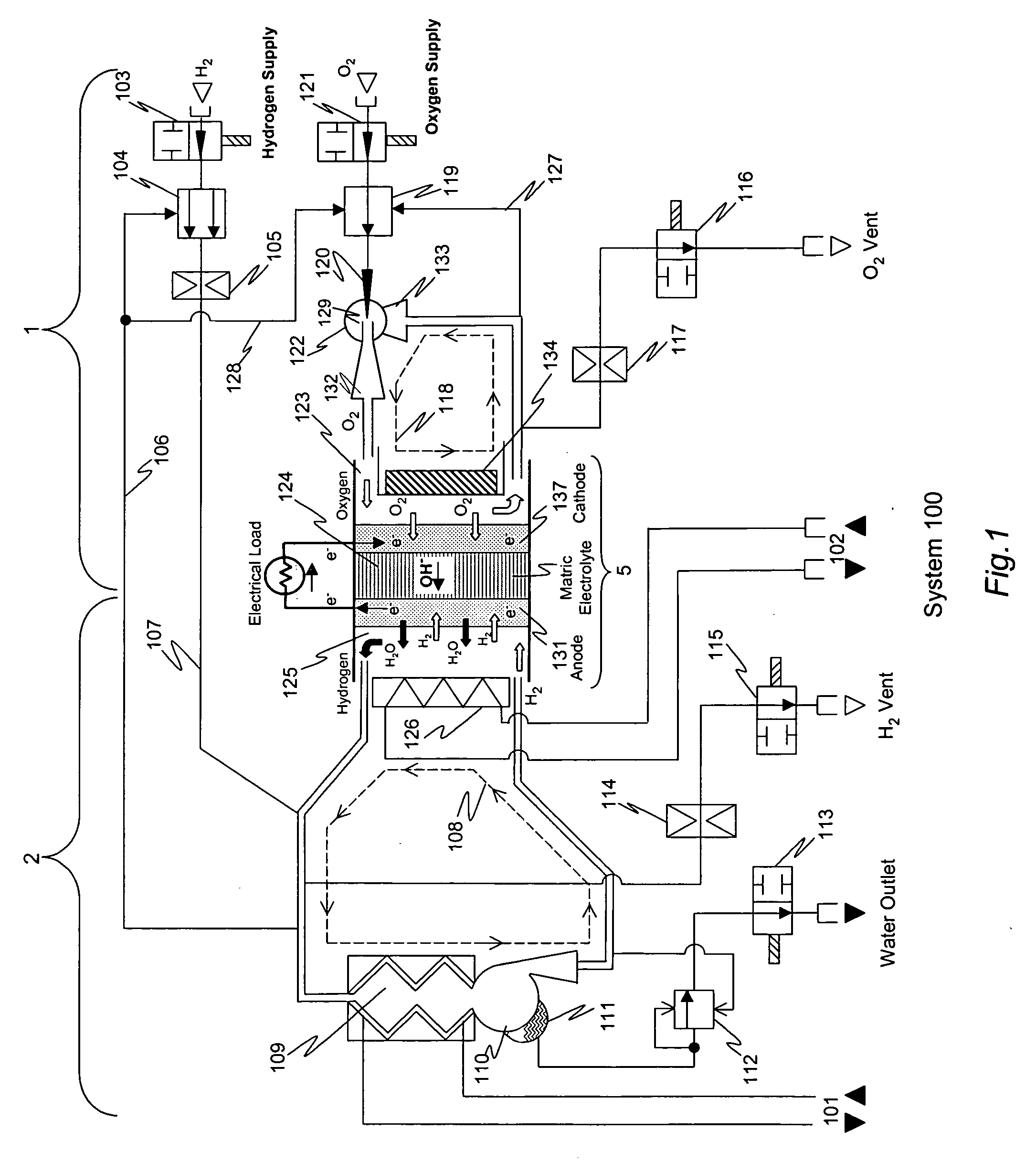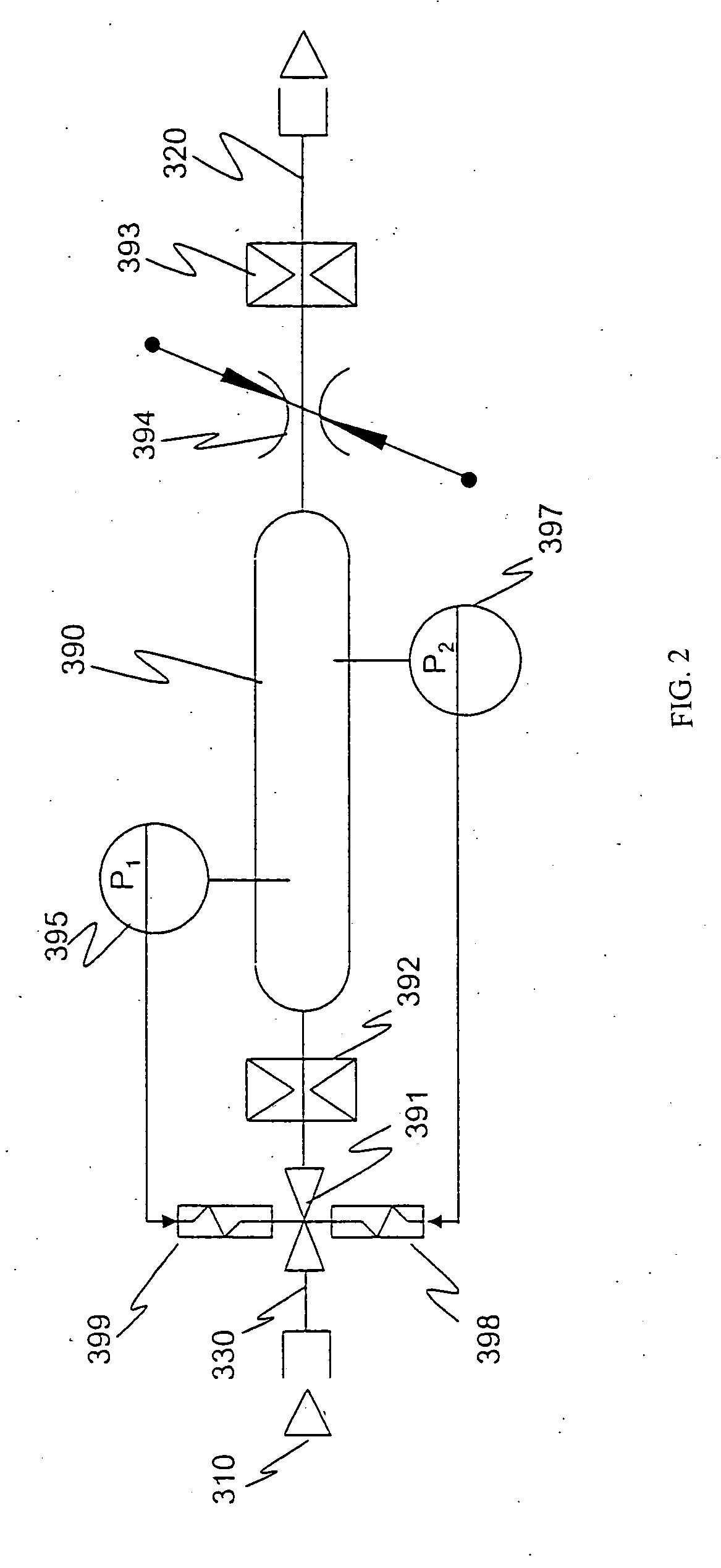Alkaline electrolyte fuel cells with improved hydrogen-oxygen supply system
a fuel cell and alkaline electrolyte technology, applied in electrochemical generators, cell components, cell component details, etc., can solve the problems of increased overvoltage at the anode, easy poisoning, and limited fuel supply to non-reactive constituents
- Summary
- Abstract
- Description
- Claims
- Application Information
AI Technical Summary
Benefits of technology
Problems solved by technology
Method used
Image
Examples
example
[0074] It should be understood that the examples and embodiments described herein are for illustrative purposes only and that various modifications or changes in light thereof will be suggested to persons skilled in the art and are to be included within the spirit and purview of this application. The invention can take other specific forms without departing from the spirit or essential attributes thereof.
[0075] The invention was implemented as a prototype AFC stack comprising 96 cells. The size of the cells in the stack was approximately 200 cm2. The stack was operated and monitored for more than 5000 hours. Principal operating parameters and selected test data are shown in Table 2 below. During the testing process, the hydrogen supply system employed a two-position type regulator and throttle as described above to established pressure pulses in the hydrogen gas supply performed steadily over the entire range of external loads for which the system was designed to be (0-7.5 kW). Dur...
PUM
 Login to View More
Login to View More Abstract
Description
Claims
Application Information
 Login to View More
Login to View More - R&D
- Intellectual Property
- Life Sciences
- Materials
- Tech Scout
- Unparalleled Data Quality
- Higher Quality Content
- 60% Fewer Hallucinations
Browse by: Latest US Patents, China's latest patents, Technical Efficacy Thesaurus, Application Domain, Technology Topic, Popular Technical Reports.
© 2025 PatSnap. All rights reserved.Legal|Privacy policy|Modern Slavery Act Transparency Statement|Sitemap|About US| Contact US: help@patsnap.com



